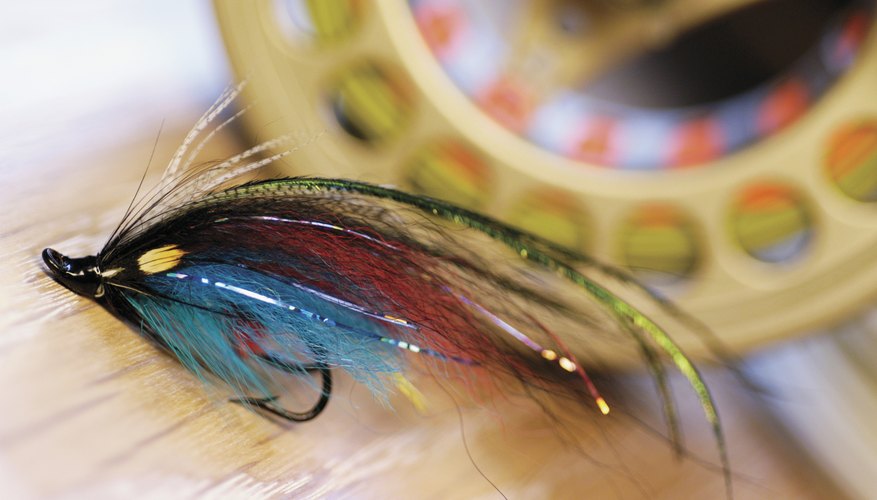
Fishing lines have been cast for sport and for supper as long as there have been water and fish. As each year progresses, the tools for fishing evolve, moving from simple twine on a stick to high-tech rods and lures. The tools for fishing vary depending on what type of fish you aim to catch, but they generally include some commonly used items.
Modern Rods
Fishing rods consist of a slender pole made of strong but pliable materials. When combined with a fishing line and reel, the rod allows you to cast your line far into the water. Rods vary depending on what type of fishing you plan on doing and typically are classified by their action (how far it bends), strength (power), taper and responsiveness. Rods typically are made from graphite or fiberglass.
Fishing Reels
The reel combines with the fishing rod and allows you to reel in your line. This allows you to pull in a fish or simply reel the line in for another cast. The reel sits in a reel seat near the handle of the fishing pole.
Types of Line
Fishing line allows you to cast your hook and bait far out into the water. Even simple string can be used as fishing line, but most fisherman use specially designed cord made for angling. Most fishing line differs in strength, depending on what type of fish you are angling for, but it also is classified by elasticity, "castability" and visibility.
Sturdy Leaders
Leaders are either monafilament or wire that is more abrasion-resistant and heavier than fishing line alone. The leader connects the end of the line to the bait and hook. It's used to protect your fishing line and help prevent it from breaking -- or being bitten in half -- while you reel in larger fish. A leader is not always necessary, and it typically is used only when there is concern that a fish will create enough force to snap your line.
Fish Hooks
The hook is what snags the fish so you can reel it in. Fishing hooks are designed to impale and imped in the mouth of a fish as it bites your bait. If the fish is unable to unhook itself, you can play it until it tires and then reel it in and gaff or net it. Fish hooks vary in design, size, shape and material depending, on what type of fish you are angling for.
Floats and Weights
Floats and weights determine where your hook settles in the water. Weights are added to the fishing line to pull the hook farther toward the bottom, to dangle enticingly in front of bottom-dwelling fish. Floats hold the line closer to the surface, preventing the entire line from sinking to the bottom. Where you place the float on the line determines how deep the weight on the line can take your hook.
Bait and Lures
Bait varies from cheap worms and fish eggs to more expensive live bait, such as small, live fish or frogs. Bait also can be as simple as a marshmallow or a kernel of corn. Lures vary in price and sophistication; they either mimic the behavior of the favorite prey of the fish or are designed to perk the attention of fish with color or reflection.
References
Writer Bio
Chris Sherwood is a professional journalist who after years in the health administration field and writing health and wellness articles turned towards organic sustainable gardening and food education. He now owns and operates an organic-method small farm focusing his research and writing on both organic gardening methods and hydroponics.



